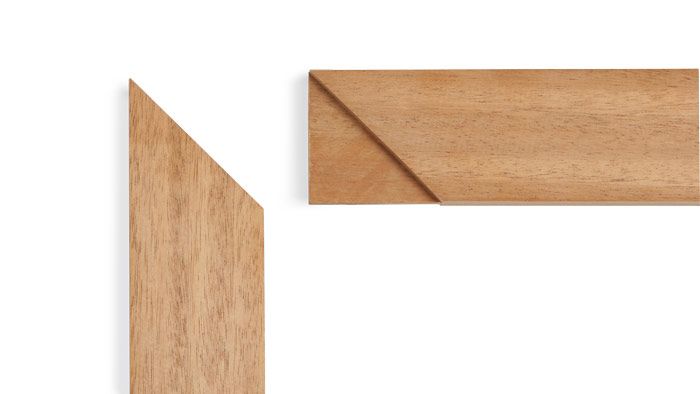
Synopsis: This joint combines the beauty of a miter with the strength of a bridle joint. Chris Gochnour demonstrates how to lay out and cut the mitered bridle joint, which is ideal for frames where you need to combine robust joinery with a clean look.
Combining the beauty of a miter joint with the strength of a bridle joint, the mitered bridle joint is a great choice for any frame—a door, for example—that needs both robust joinery and a clean look.
Cutting a mitered bridle joint with hand tools is not much different from cutting a standard bridle joint, which I demonstrated in a previous Handwork (FWW #257, p. 80). There’s still a tenon on the end of the rail that fits into the stile’s open-ended mortise. The difference is that the tenon’s shoulder is angled 45° across the rail’s front and back faces. This means that the end of the stile must be mitered to match. It’s not as complicated as it might sound. I’ll demonstrate how to lay out and cut the joint, starting with the mortise in the stile.
Lay out a miter. With a miter (or combo) square aligned with one corner, strike a knife line across the face of the stile. Knife across the inside edge. To align the square, place the knife in the line cut into the face and slide the square up to it. Mark the edge, then mark the second face. Remove waste with a backsaw. This cut is for roughing out the angle, so be close to the line, but not on it. True the miter. The low-angle, bevel-up blade of a block plane severs the end-grain fibers cleanly. Keep an eye on the layout lines on both faces. Check for square. Use a small square to check across the miter, then pull out a combination square and check the miter’s angle. Refine as needed. Mark the outside edge. Don’t use a knife here, because the severed fibers would be visible. Lay out the mortise. A mortise gauge works best for this, because it marks both sides at once. Cut along the end grain, then down the outside edge. Do not change the gauge’s setup.
For the full article, download the PDF below:
Fine Woodworking Recommended Products

Starrett 4" Double Square

Olfa Knife

Starrett 12-in. combination square























Comments
The PDF link is missing. Will it be coming eventually?
Fixed. Sorry about that.
there's nothing here.
How is the shoulder of the tenon "pare(d)"? Shoulder plane or chisel?
Log in or create an account to post a comment.
Sign up Log in